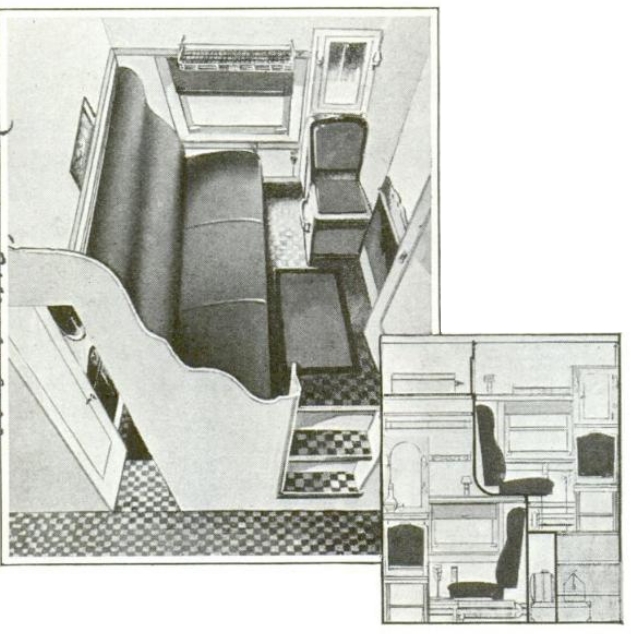In 1932, the time of this cutaway, this two-story Pullman berth intended to offer four rooms: two up and two down. Each room would have its own daybed, sink, and toilet. The article implied that this arrangement was still in its testing phase, and that if it met “with favor,” the company would build more.… Continue reading Two Story Duplex Pullman Rail Car Cutaway, 1932
Category: Periods
Search specific decades for cutaway drawings.
Radio City Music Hall Cutaway, 1930
When this cutaway first appeared, the intended structure was still called the International Music Hall, as part of Rockefeller Center, New York, NY. Later, it became known as Radio City Music Hall. Quite a juicy early Thirties two-color cutaway spread across two pages. I tried my best to mate the two pages, and I got… Continue reading Radio City Music Hall Cutaway, 1930
Jim Creek Naval Radio Station Illustration 1950
Artist unknown, as this was a tossed-off illustration in the middle of a Popular Science, but what interested me: This is one helluva massive radio station. It’s still around. It’s called the Jim Creek Naval Radio Station, and the Center for Land Use Interpretation tells us: One of the world’s most powerful transmitters, this million… Continue reading Jim Creek Naval Radio Station Illustration 1950
Ship-Based Anti Submarine Defense Cutaway, 1950
Illustration by Ray Quigley shows an anti-sub device from 1950 termed “the hedgehog.” It lobbed multiple depth charges all at once at the presumed submarine location. Charges were slightly angled so that they would land in a spreadout, scattershot pattern, covering a wider range. Click to Enlarge to 695 x 768 px: Source: Popular Science… Continue reading Ship-Based Anti Submarine Defense Cutaway, 1950
Railroad Boxcar Sweeper Arm Cutaway, 1950
This unusual device, made by Stephens-Adamson Co. of Los Angeles, CA, reached deep into boxcars that had loose contents and swept the contents out of the open door. As it turns out, Stephens-Adamson Co. is still around today. Click to Enlarge to 1350 x 517 px: Source: Popular Science March 1950
